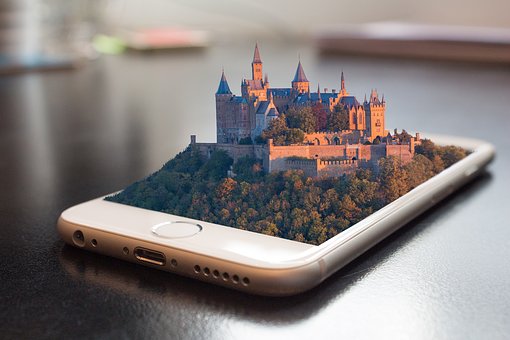Technology: A Means or an End?

If you want to make a cake, does it matter if you beat the eggs with a fork or electric mixer? Either would work, but if you wanted to make meringue, you’d probably reach for the electric mixer. If you are gathering leaves in your yard, a blower may work faster than a rake, but the rake won’t wake the baby. Technology is like that too. It is crucial to be intentional in selecting the right technology and to be deliberate in matching it to explicit learning objectives.
Marketing by technology developers has been intensifying, accompanied by claims of overcoming inequality and improving critical thinking. Conferences such as ISTE, FETC, TCEA, CUE, iNACOL, and IETC all promote on educational technology. Professional education organizations that traditionally advocate for the development of the whole child are increasingly emphasizing the use of technology to personalize learning, learn collaboratively, inspire creativity, and prepare students for tests. But does technology truly make a difference in learning outcomes?
Don’t misunderstand, I love technology and even teach IT&DML in a graduate program for teachers. Students compile and evaluate technologies for specific learning intentions. They also design informative demonstrations of selected technologies. They are routinely asked to explain their reasoning in choosing a technology for this time, place, and purpose? We also rely on models of technology integration such as SAMR, TPACK, and TAR that support increasingly complex applications of learning technologies.
However, when I visit a 3rd-grade classroom and see students spending an hour in the morning on an ELA tutorial and another hour in the afternoon with programmed math coaching, while seated in swivel or bouncing chairs with fidgeting devices, that’s when I worry about the direction that technology implementation is taking.
As a tool or utensil, technology can
*Develop foundational knowledge and skills
*Assist in information management such as compiling, clarifying, and categorizing
*Verify and advance prior learning
*Track scores
*Produce authentic products
As a conduit or process, technology can
*Engage students in evaluating evidence
*Strengthen higher level reasoning and divergent thinking
*Foster collaborative learning
*Oversee progress and improve learning outcomes
*Provide opportunities for displaying all types of learning in varied ways
Technology itself may be able to build children’s knowledge, but it cannot make children smarter. It has the potential to be transformational when teachers and students are prepared to constructively choose, use, and evaluate the technology and learning outcomes. Technology is not a panacea for learning nor a cure-all for raising test scores. Rather, the emphasis must be on promoting thoughtful adoption and valid implementation of appropriate and substantiated technologies in support of instructional aims.
Considerations and Caveats
Personalized and competency-based describe technology that adapts to the learner’s progress. Evidence is still emerging on the advantages and best use of these technologies for instructional purposes. Concerns about insulating children from learning from their mistakes, and over-individualizing learning, can be balanced through teaching and learning that also embraces interpersonal skills such as self-regulation and perseverance, and intrapersonal skills such as collaboration and empathy.
Consider Amanda and Chanda who are learning about volume measures. Amanda starts with the electronic tutorial and quickly understands the relationship between cups, pints, and quarts. Chanda is stymied by the images and vocabulary until she goes home and bakes a cake with her father. He takes a different approach. Rather than using the measures in the recipe, he gives her partial measures and has her figure out how to translate teaspoons into tablespoons and 1/3 cups into two cup measures. In doing so, she also learns to persevere and correct her mistakes.
It is also important to consider the developmental appropriateness of different technologies. A brief recap of Jean Piaget’s work explains that cognitive abilities emerge over time. Just as we don’t expect a 3-month-old to understand object permanence, we wouldn’t expect most 5-year-olds to demonstrate abstract problem-solving.
When used selectively, technology can support and encourage all modes and levels of developmental abilities. This requires easing up on the technology accelerator and taking the time to choose the best technology for a purpose. Don’t forget that children need to smell the real roses, play with tangible toys, and create original artifacts along the way. There’s always time, in real-time, for students to benefit from the advantages of a well-structured classroom debate, questioning deeply, teaching others, and monitoring progress, rather than simply reporting learning outcomes and scores.
Think about it:
- How do you use technology to personalize learning?
- In what ways can technology strengthen collaborative learning?
- What technologies would you recommend to encourage higher and deeper thinking?
- How would advise others in using technology to engage, activate, and inspire, thinking and imagining?
- Instead of just substituting technology for a more traditional resource such as a workbook, how will you use it to augment and redefine learning?
The potential for technology is already proven. Selected technologies have been validated, but the full potential of technology integration with balanced learning systems is still under development. Most importantly, there is not yet widespread evidence on which practices are most effective for specific standards and targeted learning intentions. Like the camel trying to get into the tent, technology’s nose is already in: giving the rest of it entry depends on your purpose, context, and circumstances.
 Postscript
Postscript
If technology came with safety information, what should it include? What would you add?
>This technology may be more effective when blended with other instructional strategies
>Caution, this technology may be habit-forming: Do not use for more than 1 hour at a time
>To reduce side effects, use only for the intended purpose
>Frequent use can be detrimental to children’s physical, social, and emotional development
.May result in a decrease of spending on other important instructional initiatives
As Marshall McLuhan said decades ago: “The medium IS the message.”
Images: pixabay.com